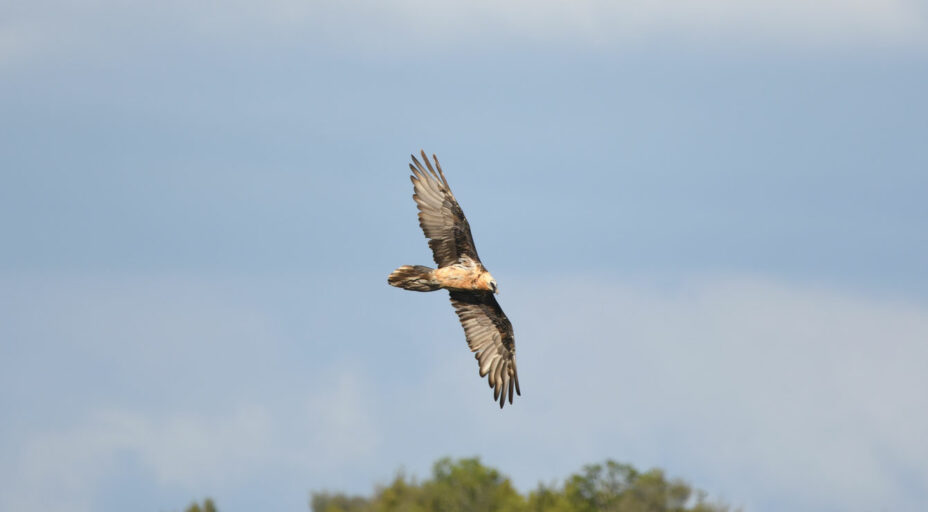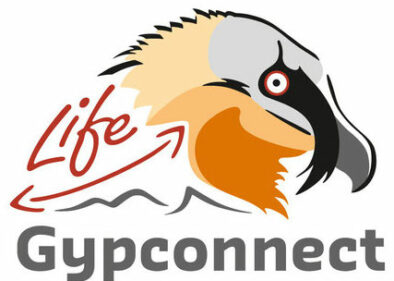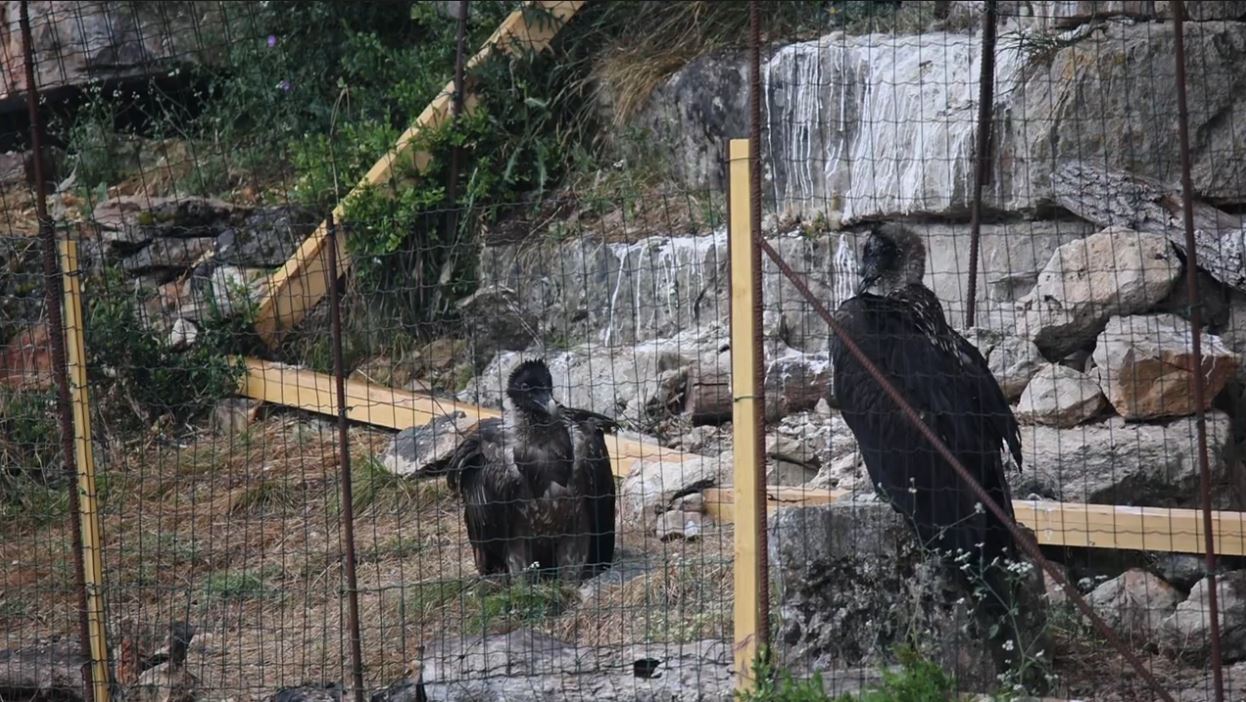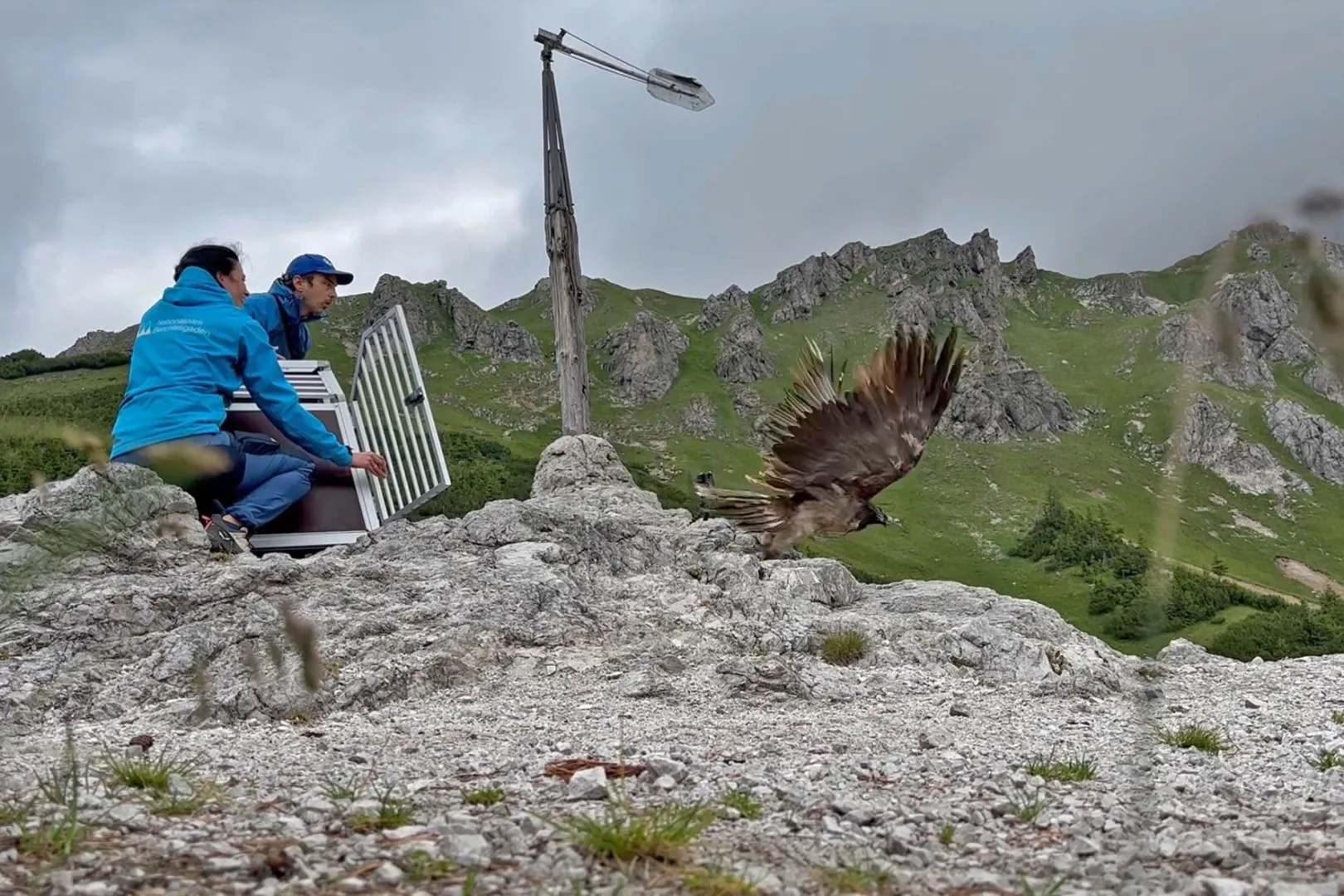Staff, technicians and managers from the partners of the LIFE+ project GYPCONECT have met this week in the Grands Causses to discuss project actions and plan future activities. Led by the League pour la Protection des Oiseaux (LPO), in partnership with the VCF, Vautours en Baronnies, Centre National d’ Informations Toxicologiques Vétérinaires, Electricité Réseau Distribution France, Parc National des Cévennes, Parc Naturel Régional du Vercors, and the Université Pierre et Marie Curie – Paris 6, this project aims to establish a breeding population of bearded vultures in the Massif Central, as well as in the Pre-Alps, through reintroduction, and promoting dispersal movements between the Alps and the Pyrenean populations.
Progress in this project, that has started recently, was reviewed, and future actions planned. This year 4 young bearded vultures will be released in the project area, two in the Grands Causses and two in Baronnies – the first time that bearded vultures will be released in the latter region. The VCF and Vautours en Baronnies have already prepared the protocol for the release, and have selected the release (hacking) site, and work has been done to prepare the cave. Potentially dangerous electricity lines in the region have been identified and some of them will be neutralized, while the project team discussed how to deal with the growing demand for wind farms in the region.
Other project actions that have registered good progress relate to the preparation of a coordinated supplementary feeding strategy to help with the dispersal of birds. Preparations are also taking place to ring and tag the young bearded vulture that has hatched from a nest in the department of Aude, in the Pre-Pyrenees, the closest to the Massif Central.
During the meetings, the project partners visited the release site in the Grands Causses, as well as a nearby “placette”, a supplementary feeding point managed by a local farmer (see photos).
In this project the VCF will be responsible for all the captive breeding – the source of the reintroduced birds, as well as for parts of the monitoring of the birds, including the tagging of birds, the monitoring of their movements, genetic monitoring of the population, among other research components. The VCF will also collaborate in the reintroduction operations proper, from selection of the best sites for reintroduction to advice on feeding regimes.
This project is part of the VCF strategy to restore the species in western Europe, now that the Alpine population is firmly re-established – 34 pairs in 2015 and a record 20 fledglings, and with the first breeding in the wild in Andalucía happening also last year (following extinction there in the 80s, and the start of the reintroduction project 9 years ago), this project aims to promote movements of the species between Iberia and the Alps, thus promoting gene flow, which will also help increasing the genetic diversity of the alpine population, and thus accelerate the end of the reintroduction project there. The reintroduction project in the Grands Causses has started 5 years ago, and with this project will see a significant boost.





